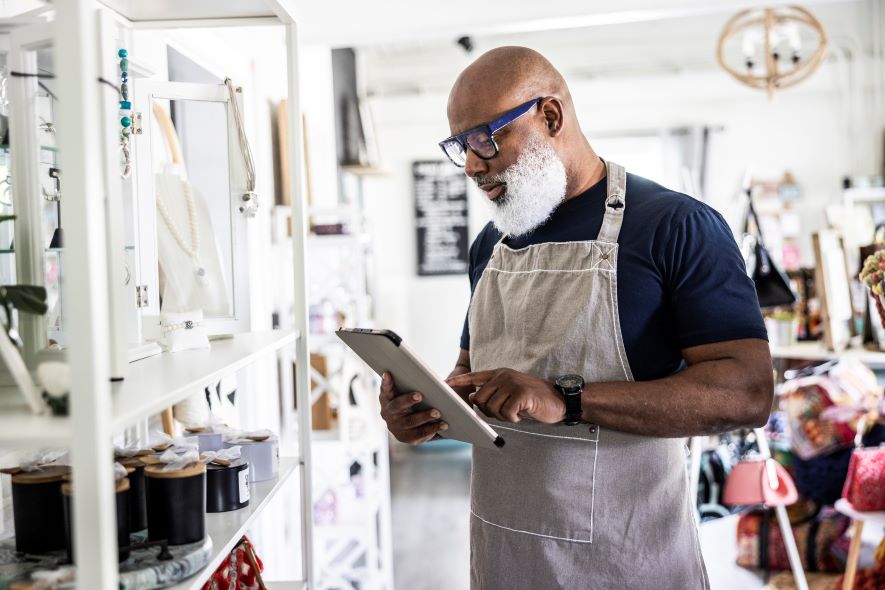Bryan Clayton of Greenpal has been in landscape contracting his entire career. Clayton’s business used to get paid the old-fashioned way: by sending invoices and follow-up payment notices via mail well after a job was completed.
Getting paid took a long time, and managing the paper trail and accounts receivable ate up valuable staff time.
Now Clayton’s lawn care operators can get paid instantly because of two simple changes: Adding a credit card processing app to their smartphones with a card reader.
“We implemented the Square mobile payment system as a means for our field-based service technicians to process payments on site, after completing service calls and small jobs,” he says.
Clayton says the mobile payment processing app alleviated the need for billing and payment in his back office. And going mobile improves customer service as receipts may be sent immediately via email.
Accepting mobile payments simplifies managing accounts receivables and overdue accounts because the need to “chase money all over town for 60, 90, and 120 days” is gone.
Accepting mobile payments can help your business save time and improve cash flow, accounts receivable processing, and customer service. But will it work for your small business?
Why Accept Credit Cards With Your Smartphone or Tablet?
Using a smartphone or tablet to accept card payments lets you bill customers and accept payments on the spot, which helps improve cash flow by speeding up the time-to-payment process. It also eliminates paper waste.
However, processing wireless payments with a smartphone or tablet benefits some types of businesses more than others. If your business includes service calls, working outdoors, or any other “in-field” location, mobile card processing could be a great fit.
Think food vendors in farmer’s markets, stalls, flea markets, food trucks, and retail environments where salespeople can accept payments anywhere in the store. The mobile-ness of this system is a bonus because avoiding lines in a retail store delights customers and improves your overall customer service experience. Think of the Apple store where a sales person can assist a customer from the time they walk in the door to the time their payment is processed.
Yael Krigman, owner of Washington D.C. cakepop and bagel bakery Baked By Yael, uses NCR Silver, a credit card reader attached to an iPad in her store.”Customers love it!” says Krigman. “Baked by Yael is directly across from the National Zoo, so we get a lot of tourists from all over the world. Many of them are seeing a tablet POS for the first time and they think it’s really cool!”
Think about your customers: If they usually pay with a credit card, and you and your staff are often on the move, accepting mobile card payments could be very convenient and efficient. Yet if you run an e-commerce shop or a business that receives most payments in cash (such as a convenience store or coffee shop), being equipped to accept mobile card payments may not have as much of an impact.
How Small Businesses Are Using Mobile Credit Card Payments
To get started you’ll need a smartphone or tablet, a portable reader, and a mobile payment app to install on your device. A portable reader is a tiny plastic device that attaches to your smartphone and turns it into a mobile card processor, which allows you to swipe cards. When you sign up with a vendor, they’ll supply the card reader and app for your smartphone.
Some popular mobile card processing vendors:
- Square processes gift cards and accepts payments offline, such as when the internet is out.
- Payline includes inventory management and is EMV-enabled to accept chip cards.
- QuickBooks GoPayment integrates with QuickBooks accounting and is EMV-enabled.
- PayAnywhere includes inventory management, discount and tax options right in the app.
When selling off-site at farmers’ markets and festivals, Krigman and her staff use a Square reader. The big benefit to mobile payments for Krigman is the cost.
“We found that processing mobile credit card payments was less expensive than traditional POS systems,” she says. “As a small bakery, we don’t need all of the features of more traditional POS systems, which tend to be geared more to restaurants and larger retailers.”
A traditional POS or point-of-sale system is the typical cash register setup (one or more cash registers for processing cash, debit and credit purchases in a set location) most of us are familiar with from restaurants and department stores. The price of a traditional POS may range from about $600 to $2000, making it more expensive than most mobile card systems that come with free or lower-priced card readers and transaction fees.
Accepting mobile card payments could give your business a competitive edge with customers who don’t carry cash or a checkbook. If you’re like Krigman and in an industry where your competition has been quick to embrace the technology, however, you’ll need to get on board just to keep up with your peers.
“At farmers’ markets and festivals, most vendors accept credit card payments and use a mobile credit card processor,” she says.
But Is It Secure?
Mobile card processing sounds good so far, but is it safe to send customers’ credit card info hurtling through cyberspace? Although society may be comfortable with mobile devices, people still worry about digital security and privacy.
When it comes to security and mobile card processing, remember these terms: PCI Data Security Standard, SSL protocol and encryption keys.
The PCI Data Security Standard is a set of security “standards” that must be followed by organizations/businesses accepting major credit cards like Visa, Mastercard, American Express, and Discover. All mobile card-processing systems must comply with the security standard.
SSL protocol refers to Secure Sockets Layer, which uses encryption to protect private information transmitted via the Internet. And data encryption simply means that information getting transferred is scrambled using complicated code. Even if bad guys intercept it during transmission, they shouldn’t be able to decipher it.
Krigman says customer experience, including security, was her top concern when she was shopping for a card processing system. “We wanted to make sure our customers’ credit card information would be safe and that we chose a POS that was tried-and-tested, even if it was still evolving.” Yet Clayton had no security concerns at all. “None whatsoever,” he says. “These are multibillion-dollar companies powering the stuff so from our perspective it was a no-brainer.”
When reviewing mobile card processing systems, check the company’s website to confirm that they meet the PCI Data Security Standard, and that the system uses both SSL protocol and encryption keys to protect financial information. Also, ask whether there’s a way to lock a device if it’s lost or stolen.
Hint: sites that use SSL usually start with “https” instead of “http”.
Is Mobile Card Processing Worth the Cost?
Like most bank and credit services, mobile card processing costs money. Krigman says the cost is definitely worth it, both for her in-store mobile system as well as the payment system. Baked by Yael uses theirs when they take their products on the road.
“The price we paid for the NCR Silver equipment was a small fraction of the cost we would have had to pay for a more robust system that had far more features than we as a small bakery actually need,” she says. “Square was also worth the cost. If we didn’t accept credit cards at festivals and farmers’ markets we’d be at a significant disadvantage and we’d lose out on sales.”
Figuring out your costs may be tricky because not all mobile credit card processing fees are created equal. Expect to pay some or all of the following costs:
- setup fees
- monthly fees
- transaction fees
- possible equipment costs
A set-up fee is a one-time fee to set up your account, and monthly fees are similar to bank account fees, where your monthly payment lets you process a set number of transactions and/or up to a set monthly dollar amount. Review fee details carefully and read the fine print, says Krigman. “A lot of mobile credit card processors entice you with low (or no monthly) fees, but then you end up paying higher processing fees.”
Transaction or processing fees may be charged instead of (or in addition to) monthly fees, and may include a percentage of the transaction amount plus a set transaction charge, for example 2.9% plus 0.30 cents per transaction.
“Square takes their fees out of each batch, rather than once a month,” says Krigman. “It can be a bit of a headache for bookkeeping, but it’s great in terms of cash flow because I’m not surprised with credit card processing fees for the entire month being debited from my bank account all at once.” In some cases your transaction fee may be reduced if you reach a set monthly dollar transaction total, or if you have to pay for the card readers, also known as infield readers because they can be used when working “in the field”, outside of your shop, store or office.
“The infield readers are definitely worth the cost because overall we get a little bit better transactional charge associated with them so overtime it pays for itself,” says Clayton.
What to Watch For
Once you’ve decided to take the plunge and start accepting mobile credit cards, make note of the required equipment, fee structure, and smartphone compatibility of the system, and whether the system comes with EMV technology to process chip-enabled credit cards. Other features you may want include automatic tip acceptance, sales tax calculations, and reporting features. Not all of these features come with every mobile processing app, so make note of your “must-haves features” when shopping. For example, online accounting system FreshBook’s new FreshBook Card Reader integrates directly with its accounting software, so if you’re already using it for accounting, you may want to check it out.







Looks like some very helpful information! I read the entire article and I love the writing style and passion in your posts. Again, I enjoyed this so much. Thanks for the excellent post. Keep it up!!!
You’re welcome, Jenny! We’re so glad you liked the article!